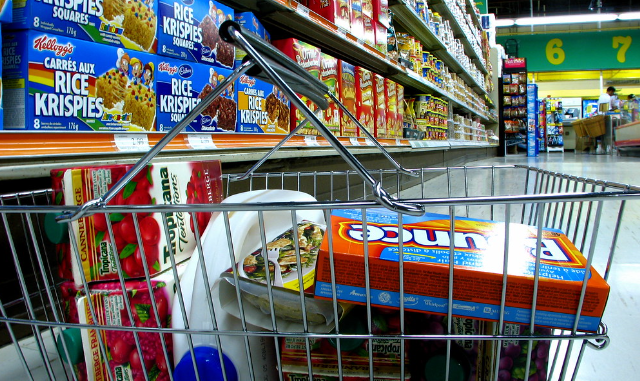In late 2021, Research Co. and Glacier Media reviewed the shopping behaviours of British Columbians. The survey was not designed to measure if residents were trying to save money. It aimed to create a baseline to figure out how the COVID-19 pandemic has affected what we buy and how.
Last month, we asked these questions to British Columbians. The most recent findings continue to point to some significant generational discrepancies. The apparent end of the pandemic has not sent residents of all ages back to the shopping mall.
Two-thirds of British Columbians (66 per cent) say they are buying groceries at a physical store just as often as they did before the pandemic, up four points since 2021. We also see increases in the number of in-person visits to physical stores to buy items for the home and family (57 per cent, up five points) and to buy gifts (55 per cent, up seven points).
As expected, British Columbians are relying less on home delivery – a choice they did not have when they were affected by restrictions and lockdowns. Compared with 2021, our survey shows declines in the proportion of residents who are doing two things as often as they did before COVID-19: ordering groceries online (43 per cent, down four points) and buying gifts online (41 per cent, down three points).
The exception arrives when we query about ordering items for the home or family online. Across the province, 43 per cent of residents are doing this at the same rate as they were before the pandemic, up two points since 2021. Reliance on this form of purchase is highest among British Columbians aged 35 of 54, with 41 per cent of middle aged residents saying they are ordering items for the home or family online more often now than before the pandemic.
While inflation has played a role in our expenditures, British Columbians are more likely to go out now. More than half (52 per cent, up seven points since 2021) are buying a beverage or snack to go at a coffee shop just as often as before the pandemic.
We also see significant increases in the proportion of British Columbians whose habits have returned to pre-pandemic levels, including having a beverage or snack inside a coffee shop (43 per cent, up 12 points), having lunch at a sit-down restaurant (also 43 per cent, up 15 points), having breakfast at a sit-down restaurant (40 per cent, up 10 points), having dinner at a sit-down restaurant (39 per cent, up 12 points) and having a drink at a bar or pub (36 per cent, up 13 points).
These are positive findings when compared with the behaviour of British Columbians who were worried about contracting COVID-19 in late 2021. Still, there is another component to these numbers that is purely financial. About half of British Columbians are partaking in visits to restaurants less often than before March 2020 for breakfast (50 per cent), lunch (48 per cent) or dinner (49 per cent). British Columbians aged 55 and over are more likely to be staying away from restaurants now.
Even as the province does not have to worry about the Omicron variant, and with fewer than one in 10 residents choosing not to get vaccinated against COVID-19, there is little change in the inclinations of British Columbians. More than half (55 per cent, up one point) prefer buying things in person than online, while two in five (40 per cent, down one point) prefer buying things online than in person.
Practically three in five British Columbians aged 18 to 34 (59 per cent) would rather have a world where they can shop from their computers or smartphones, compared with 43 per cent for those aged 35 to 54 and just 23 per cent among those aged 55 and over.
Conversely, a visit to a store is a preeminent feature of the shopping experience for British Columbians aged 55 and over (63 per cent). The proportion of shoppers who prefer to do things in person is lower among those aged 35 to 54 (50 per cent) and among those aged 18 to 34 (38 per cent).
Even as British Columbians slowly put the pandemic behind them, it is evident that there will be no easy solution for proponents of both e-commerce and bricks-and-mortar stores. The needle barely moved since 2021, with the oldest British Columbians eager to get out of their homes to look for products, and the youngest adults in the province aching for a time in which everything will be available online.
Mario Canseco is president of Research Co.
Results are based on an online study conducted from November 14 to November 16, 2022, among 800 adults in British Columbia. The data has been statistically weighted according to Canadian census figures for age, gender and region in British Columbia. The margin of error – which measures sample variability – is plus or minus 3.5 percentage points, 19 times out of 20.



